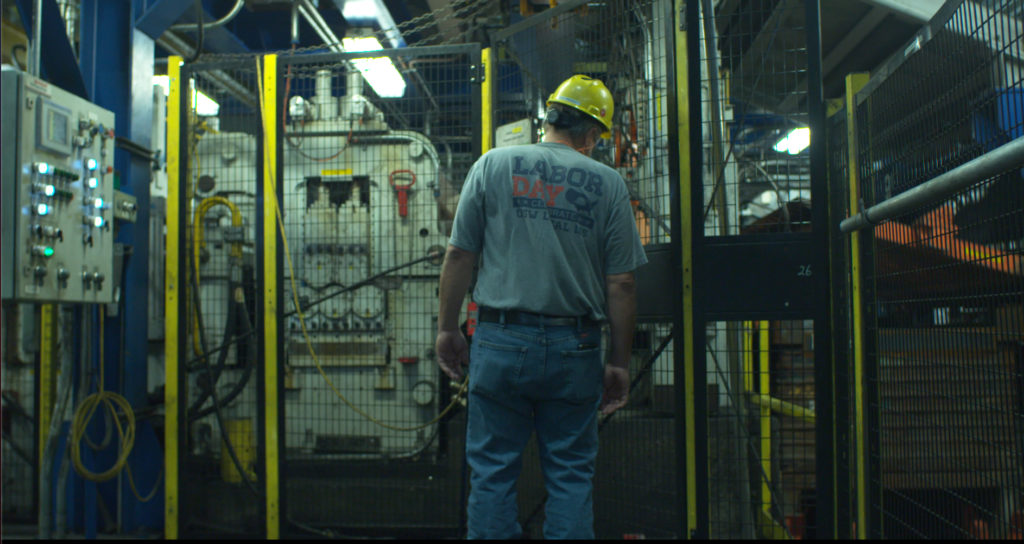
Clean Aluminum
Aluminum is essential to our lives. We need it to build bridges, smart phones, kitchen appliances, and so much more. Aluminum is also a primary component in solar panels, power lines, and electric vehicles—making it a building block in our clean energy future.
Domestic aluminum manufacturing is vital. However, in recent years, U.S. aluminum smelters have closed their doors, eliminating good-paying jobs, as new smelters have opened in countries with higher pollution and lower wages. Now more than ever, we need to revitalize the U.S. aluminum industry to ensure we meet our climate, jobs, and national security goals.
Why It Matters
Aluminum demand could increase by 80% by 2050 due to its role in the clean economy. The growth of the clean economy presents a tremendous opportunity to rebuild domestic aluminum manufacturing.
To produce the clean energy technologies of the future, we must also transform industrial production to produce essential materials like aluminum with far lower emissions. Industrial emissions are already the largest source of U.S. climate pollution when accounting for electricity use.
The Inflation Reduction Act includes historic investments to help ramp up clean domestic manufacturing and ramp down industrial emissions. We now have the opportunity to use these investments, alongside fair trade policies, to revitalize U.S. aluminum manufacturing. Doing so will mean reshoring good union jobs, reducing global dependence on highly-polluting aluminum production overseas, and securing a stable supply of this essential material for the clean economy.

The Outsourcing of U.S. Aluminum Manufacturing: Fewer Jobs, More Pollution
In the late 20th century, the United States was a top producer of aluminum. During the 1990s, 23 aluminum smelters provided a stable supply of aluminum and good jobs in the United States. Today, just five of these smelters remain in operation. U.S. aluminum production fell by 74% between 1995 and 2021 and thousands of good-paying jobs disappeared from the industrial heartland. The job loss was particularly painful because aluminum manufacturing jobs tend to be higher-quality—with better wages, benefits, and access to unions—than many other jobs available to workers without a college degree.
The domestic aluminum manufacturing decline endangers national security. Only one of the remaining domestic smelters produced the high-purity aluminum needed by the U.S. Armed Forces, and it idled in June 2022. This leaves the U.S. entirely dependent on its foreign suppliers.
The decline of U.S. aluminum manufacturing actually resulted in more climate pollution, not less. Why? Because instead of being produced in the U.S., the world’s aluminum started to come from countries with lower environmental and labor standards where aluminum manufacturing causes higher emissions.
As companies shut down their U.S. aluminum smelters, smelters in China and India opened to take their place. This outsourcing meant not only lost jobs, but increased pollution. Producing the average ton of aluminum in China causes 60% more climate pollution than in the U.S., while India’s aluminum industry is about twice as polluting as the U.S. industry.
Due to outsourcing, today two-thirds of the world’s aluminum is made in countries with more polluting processes than in the U.S. As we produce more aluminum for solar panels and electric vehicles to achieve our climate goals, we cannot depend on high-polluting aluminum that moves us in exactly the opposite direction.
The Solution: Invest in Clean Aluminum
The Inflation Reduction Act offers more than $50 billion in investments to support clean manufacturing. Many of those investments can and should help spur a revival of clean U.S. aluminum manufacturing.
For example, the bill includes billions of dollars for new grants, loans, and tax credits that could help existing U.S. aluminum smelters become even cleaner and more globally competitive by boosting efficiency, securing affordable clean electricity, and slashing pollution. The bill will also boost demand for clean U.S. aluminum manufacturing by driving dramatic growth in solar power, electric vehicles, power lines, and efficient buildings that use clean U.S. aluminum.
If we get the details right, these investments could be a game-changer and establish aluminum production as the backbone of our clean energy economy. We have the opportunity to reverse the decline of U.S. aluminum manufacturing, offer good jobs to tens of thousands of workers, support cleaner air and economic restoration for industrial communities, and strengthen our fight to secure a livable climate.

We Can Revitalize Aluminum Manufacturing with New Climate Investments
Do you need a one pager for your staff or constituents that list the top things you need to know about domestic aluminum production? Download our factsheet for quick reference on the aluminum industry and federal investment opportunities available to revitalize the supply chain.